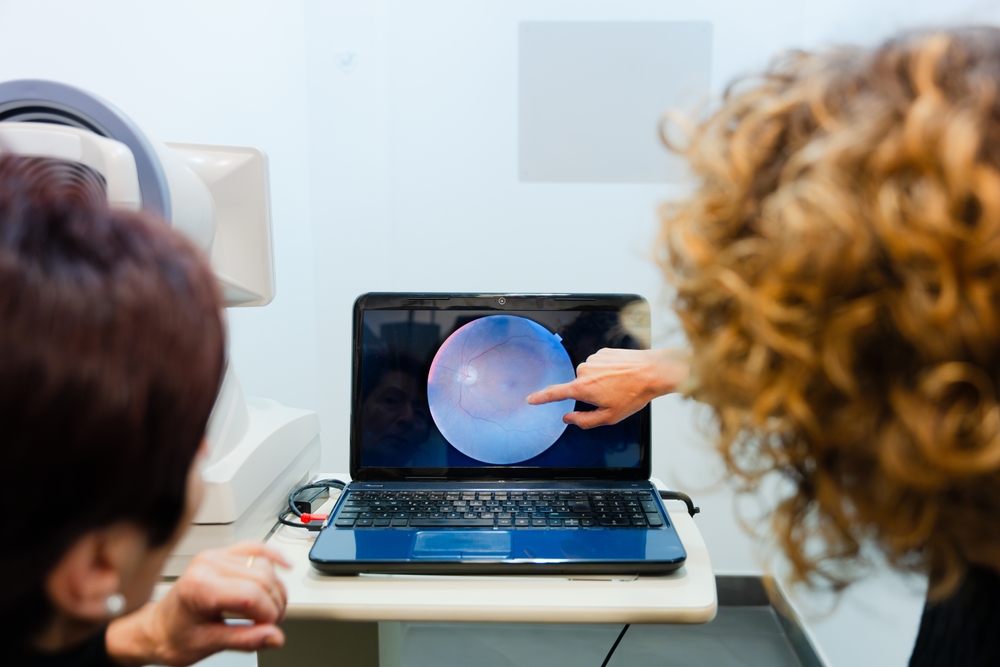
Diabetes is a widespread condition that affects many parts of the body, including the eyes. One of the most common eye complications associated with diabetes is diabetic retinopathy, a serious condition that can lead to vision loss if left untreated.
What Is Diabetic Retinopathy?
Diabetic retinopathy is an eye condition that affects the blood vessels in the retina, the light-sensitive tissue at the back of the eye. High blood sugar levels caused by diabetes can damage these blood vessels, leading to leakage, swelling, or the growth of abnormal new blood vessels. Over time, these changes can interfere with your vision and, if untreated, may cause blindness.
Causes of Diabetic Retinopathy
Diabetic retinopathy is directly linked to diabetes. When blood sugar levels remain elevated for prolonged periods, it weakens the small blood vessels in the retina, leading to damage. There are two stages of diabetic retinopathy:
Non-Proliferative Diabetic Retinopathy (NPDR): In the early stage, the walls of the retina's blood vessels weaken, leading to tiny bulges that may leak blood and fluid into the retina. This can cause retinal swelling, known as macular edema, which affects sharp central vision.
Proliferative Diabetic Retinopathy (PDR): In this more advanced stage, new, abnormal blood vessels form in the retina. These fragile vessels can bleed into the eye, causing severe vision issues or even detachment of the retina, which can result in permanent vision loss.
Symptoms of Diabetic Retinopathy
In the early stages of diabetic retinopathy, there may be no noticeable symptoms, which is why regular eye exams are crucial for individuals with diabetes. As the condition progresses, symptoms may include:
Blurry vision
Difficulty seeing at night
Dark spots or floaters in your vision
Colors appearing faded or washed out
Sudden vision loss
If you notice any of these symptoms, it’s important to schedule an eye exam immediately, as early detection can prevent further damage.
Treatment Options for Diabetic Retinopathy
The treatment for diabetic retinopathy depends on the severity of the condition. There are several treatment options to help manage the disease and preserve your vision:
Monitoring and Management: In the early stages (NPDR), regular eye exams may be all that’s needed. Controlling blood sugar levels, blood pressure, and cholesterol can help slow the progression of the disease.
Medications: In some cases, injections of anti-VEGF (vascular endothelial growth factor) medications can reduce swelling in the retina and prevent the growth of abnormal blood vessels. These injections are administered directly into the eye.
Laser Treatment: Laser surgery can be used to seal leaking blood vessels and shrink abnormal ones. This treatment is particularly effective for preventing further vision loss in cases of proliferative diabetic retinopathy.
Vitrectomy: In advanced cases where there is significant bleeding or retinal detachment, vitrectomy surgery may be required. This procedure involves removing the vitreous gel from inside the eye and replacing it with a saline solution.
Preventing Diabetic Retinopathy
The best way to prevent diabetic retinopathy is to manage your diabetes effectively. Maintaining healthy blood sugar, blood pressure, and cholesterol levels is key to protecting your eyes from this condition. Additionally, scheduling regular comprehensive eye exams, even if you don’t have symptoms, can help catch the condition early and prevent vision loss.
Schedule Your Eye Exam at Limestone Eye Care
At Limestone Eye Care, we prioritize your vision health. If you have diabetes or are experiencing any vision changes, we encourage you to schedule a comprehensive eye exam. Early detection and treatment of diabetic retinopathy can make all the difference in preserving your sight.
Contact Limestone Eye Care to learn more about how we can help manage diabetic retinopathy and keep your eyes healthy for years to come. Visit our office in Lawrence, Kansas, or call (785) 268-6880 to book an appointment today.










